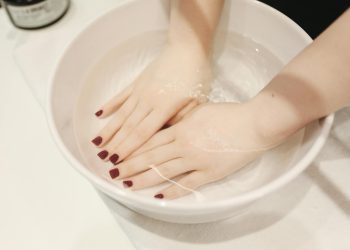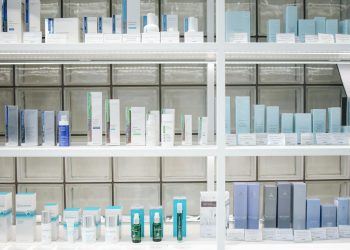In the glossy world of beauty advertising, anti-aging products are often portrayed as miraculous elixirs, capable of erasing decades from the face with a few drops or dabs. Promises of “younger-looking skin,” “reduced wrinkles,” and “ageless glow” abound on labels and in influencer feeds. But beyond the marketing language lies a rapidly evolving field of science. As researchers unravel the biological mechanisms of aging, the cosmetics industry races to translate those findings into products that can genuinely impact how we look—and, more importantly, how our skin functions over time.
Understanding the real science behind anti-aging products begins with recognizing that aging is not a singular event but a multifaceted biological process. The skin, being the body’s largest and most visible organ, is particularly affected by both intrinsic and extrinsic factors. Intrinsic aging refers to the natural, genetically programmed decline in skin function over time, while extrinsic aging is driven by external forces like sun exposure, pollution, and lifestyle choices. Together, these factors lead to the hallmarks we associate with aging skin: wrinkles, sagging, dryness, and uneven pigmentation.
So what, exactly, are the ingredients that claim to combat these signs—and do they actually work?
The Role of Collagen and Elastin
At the heart of most anti-aging discussions are two proteins: collagen and elastin. Collagen provides structural integrity, while elastin offers flexibility and bounce. Both decline with age. By the time we hit our 30s, collagen production begins to slow, and by our 50s, its degradation often outpaces production. This loss contributes directly to the formation of wrinkles and skin laxity.
Many anti-aging products aim to stimulate collagen synthesis or prevent its breakdown. Retinoids, derivatives of vitamin A, are among the most studied and effective ingredients in this regard. Retinoic acid (used in prescription formulations) and its over-the-counter counterparts like retinol work by increasing cell turnover and promoting collagen production in the dermis. Numerous clinical studies support their efficacy, though they can cause irritation in sensitive skin.
Peptides and Growth Factors
In recent years, peptides—short chains of amino acids—have emerged as key players in skin rejuvenation. Specific peptides can act as messengers that signal the skin to repair itself or produce more collagen. Matrixyl (palmitoyl pentapeptide), for instance, has been shown to reduce wrinkle depth and improve skin texture in controlled studies.
Growth factors, which are naturally occurring proteins in the body, also stimulate cellular regeneration. Some high-end anti-aging serums incorporate bioengineered growth factors to enhance skin repair. While research is still ongoing, early findings suggest that topical application may support collagen synthesis and skin healing, though the effects are generally modest compared to more invasive dermatological procedures.
Antioxidants and Free Radical Defense
Another cornerstone of anti-aging science is the role of antioxidants in combating oxidative stress. Free radicals—unstable molecules generated by UV rays, pollution, and even normal metabolic processes—damage cells and accelerate aging. Antioxidants neutralize these harmful molecules and help protect the skin from premature deterioration.
Vitamin C is perhaps the most well-known antioxidant in skincare. Ascorbic acid, its most effective form, brightens the skin, reduces hyperpigmentation, and stimulates collagen production. However, it is notoriously unstable and must be packaged properly to remain effective. Other potent antioxidants used in anti-aging formulations include vitamin E, ferulic acid, niacinamide (vitamin B3), green tea extract, and coenzyme Q10.
It’s important to note that while antioxidants protect against damage, they don’t reverse existing signs of aging. Their true power lies in prevention, making them best suited for long-term, consistent use.
Hydration: More Than Just Moisture
Though often overlooked, hydration is a critical aspect of youthful-looking skin. Dehydrated skin appears dull, tight, and enhances the appearance of fine lines. Ingredients like hyaluronic acid (HA) are highly valued for their ability to retain water—up to 1,000 times their weight in moisture.
Unlike collagen, which is too large to penetrate the skin, hyaluronic acid acts as a surface hydrator and plumper. It can temporarily smooth the skin and give the appearance of fullness, especially when used in serums or under moisturizers. Some newer formulations use smaller HA molecules or injectable versions to reach deeper layers of the skin.
Ceramides and fatty acids also play a vital role in maintaining the skin’s barrier function, which becomes compromised with age. A healthy barrier locks in moisture and prevents irritants from entering, making these ingredients essential in any serious anti-aging regimen.
Exfoliation and Cell Turnover
Youthful skin is marked by its ability to renew itself every 28 days. As we age, this cycle slows dramatically, leading to a buildup of dead skin cells that can dull the complexion and emphasize lines. Exfoliants—both physical and chemical—help remove these cells and reveal fresher skin underneath.
Alpha hydroxy acids (AHAs) like glycolic and lactic acid are commonly used chemical exfoliants that gently dissolve the bonds between dead skin cells. Beta hydroxy acids (BHAs), such as salicylic acid, penetrate deeper into the pores and are especially useful for acne-prone or oily skin.
Regular exfoliation not only improves texture and brightness but also enhances the absorption of other active ingredients in your skincare routine. However, over-exfoliation can lead to irritation, so moderation and proper formulation are key.
The Myth of “Natural” Anti-Aging
One of the most persistent trends in skincare is the belief that “natural” equals better. While botanical extracts can offer benefits—aloe vera for soothing, chamomile for inflammation, licorice root for brightening—being natural does not automatically make an ingredient safe or effective. Arsenic and poison ivy are also natural, after all.
What matters is the concentration, formulation, and delivery system of any active compound. Synthetic molecules like retinoids or lab-stabilized vitamin C often outperform their plant-based cousins because they are engineered for stability and skin compatibility.
Sun Protection: The Ultimate Anti-Aging Step
No anti-aging routine is complete without sunscreen. Ultraviolet radiation is the single most significant contributor to extrinsic skin aging. Daily use of a broad-spectrum sunscreen with SPF 30 or higher protects the skin from DNA damage, pigment changes, and breakdown of collagen and elastin.
Ironically, sunscreen is one of the least glamorous yet most effective anti-aging products available. Its benefits are preventive, not corrective, but they are critical in maintaining youthful skin over time.
The Role of Lifestyle and the Bigger Picture
Anti-aging products can support healthier-looking skin, but they are only part of the equation. Diet, sleep, stress management, and exercise all contribute significantly to how we age. Skin reflects internal health. No serum can counteract the effects of smoking, chronic sleep deprivation, or unrelenting sun exposure.
Emerging research also suggests that the gut microbiome may influence skin aging, prompting interest in probiotics and nutritional approaches to skincare. While still a developing field, it reinforces the idea that aging is holistic—what you put into your body matters just as much as what you put on your face.











